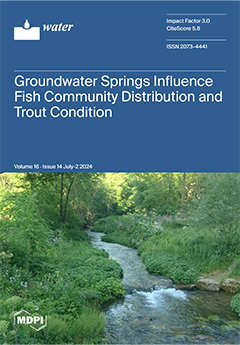Concentrating organic matter in sludge and converting it into methane through anaerobic bioconversion can improve resource recovery from domestic wastewater. Enhanced membrane coagulation (EMC) is highly efficient at concentrating organic matter, but residual coagulants (aluminum salts) can obstruct bioconversion by blocking microbial access.
[...] Read more.
Concentrating organic matter in sludge and converting it into methane through anaerobic bioconversion can improve resource recovery from domestic wastewater. Enhanced membrane coagulation (EMC) is highly efficient at concentrating organic matter, but residual coagulants (aluminum salts) can obstruct bioconversion by blocking microbial access. Limited research exists on evaluating EMC sludge bioconversion performance and addressing coagulant inhibition. This study proposes alkaline pre-fermentation to break down HO-Al-P backbones in coagulated sludge flocs, thereby improving hydrolysis and organic acid production for anaerobic digestion. Among the tested alkaline conditions (pH 9, pH 10, pH 11), pre-fermentation at pH 11 released the most organic matter (4710.0 mg/L SCOD), 20.4 times higher than without alkaline treatment. At pH 11, phosphate (61 mg/L PO
43−–P) and organic acid production (2728.1 mg COD/L, with nearly 50% acetic acid) peaked, resulting in superior volatile solids removal (65.2%) and methane production (185.8 mL/g VS) during anaerobic digestion. Alkaline pre-fermentation favored alkali-tolerant bacteria such as Firmicutes and Actinobacteria, especially at pH 11, while neutrophilic Proteobacteria were suppressed.
Trichococcus and
Bifidobacterium, known acid producers, dominated under all conditions, with their abundance increasing at higher pH levels. Anaerobic digestion enriched fermentative bacteria like Chloroflexi and Synergistota (e.g.,
Thermovirga), especially in high pH reactors.
Methanothrix, an acetoclastic methanogen, became the dominant methanogenic archaeon, indicating that methane production from EMC sludge primarily followed the acetoclastic methanogenesis pathway. Our findings demonstrate that alkaline pre-fermentation at pH 11 significantly enhances the hydrolysis efficiency of EMC sludge for methane recovery.
Full article





